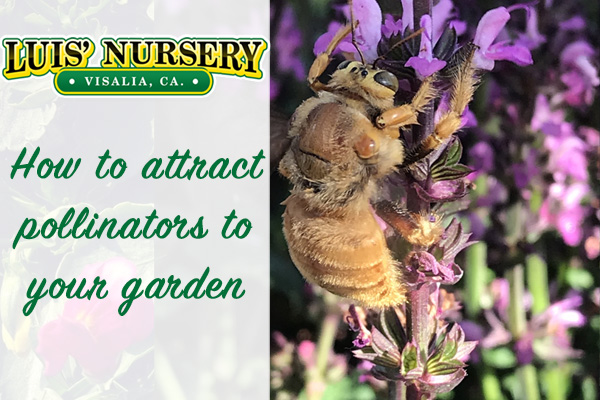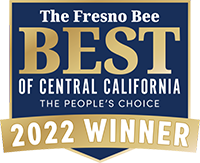If you want to know the secret to a thriving, blooming backyard, it’s probably buzzing around out there right now. Sun, soil and water are important, but it’s butterflies, bees, ladybugs, birds and other pollinators that bring your garden to life year after year.
Bees and butterflies are struggling right now, though, and need all the help we can give them. More man-made buildings, less open space, and disappearing food sources are hurting both their survival – and the survival of our flower, fruits, gardens and pretty much everything that grows.
Good news for them, and for us, is that it’s easy to create a garden that will attract and nourish pollinators. We’ve got all the plants and the knowledge you need to create a pollinator paradise here at Luis’ Nursery. Here’s how to get started:
How to make a pollinator garden
Just like there are a wide variety of bees, butterflies, birds and more, you can attract them by planting a diverse variety of plants and flowers that are sources of nectar and pollen they love. As you plan your garden, make a list of at least 10 to 20 plants that are attractive to pollinators. Don’t forget that night-blooming flowers will support moths and bats, which also serve to spread pollen and help plants thrive. (See a list of plants, below, that we stock at Luis’).
When planting, follow these steps:
- Include plants native to your region, as these are the natural food source for pollinators that they love.
- Catch pollinators attention by planting in clumps, rather than single plants. Create large landing zones that butterflies, hummingbirds, ladybugs and bees can’t resist.
- Choose plants that have different flowering times so that you’ll have constant blooms in your yard from spring through the fall.
- Reduce or eliminate the use of pesticides in your garden.
- Provide safe nesting spot for native bees. Not all bees live in hives, many California natives are ground-burrowing. Leave occasional dead tree limbs in safe spots where people won’t trip over them in your landscape. Drill holes in a variety of sizes to create “bee condos.”
- Provide clean water by including birdbaths or water features that have half-submerged stones or décor that can serve as perches for thirsty pollinators.
Here is a list of pollinator and host plants, as well as trees, herbs and an excellent collection of California natives we have currently here at Luis’ Nursery. Drop by and ask, we’ll be glad to help you find the right ones to fit your home, garden and landscape.
- Milkweed
- Hyssop
- Yarrow
- Passionvine
- Sidalea
- Baccharis (coyote brush)
- Basil
- Spice bush
- Verbenas
- Catmint
- Coreopsis
- Bidens
- Lavender
- Echinacea (coneflower)
- Assorted mints
- Cardinal flower
- Oregano
- Liatris (blazing star)
- Rosemary
- Bee balm
- Russian sage
- Gaillardia
- Thyme
- Grindelia (gumweed)
- Goldenrod
- Elderberry
- Penstemon
- Coyote mint
- Salvias (excellent selection!)
- Selfheal (prunella)
- Helenium (sneezeweed)
- Buckwheats (red and white)
- Acacia
- Redbud
- Manzanita
- Wild rose
- Oregon grape
- Toyon
- Ceanothus (wild lilac)
- Aster



